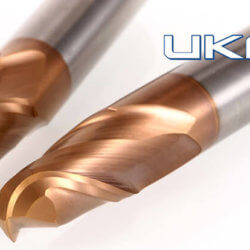Carbide Grades - carbide turning insert grades
“Double negative” insert has high cutting edge strength and can withstand large cutting loads. Tools with negative double angles also require high rigidity of machine tools, workpieces, and fixtures.
The choice of milling insert preparation is also a consideration in face milling. It is more appropriate to select the pressing insert on some processing occasions. And sometimes it is also necessary to select the grinding inserts.
In order to minimize the impact on the insert, reduce the damage of the insert, and avoid the surface contact mode of STUV, the geometric angle of the face milling insert should also be taken into account when considering the cutting angle.
Face milling inserts have better surface quality. The article is mainly about selecting face milling inserts based on the following dimensions.

If it is uncertain whether the machine tool has enough power to maintain the milling insert cutting at such a ratio, the axial cutting thickness can be completed two or more times, so as to maintain the ratio of the milling insert diameter to the cutting width as much as possible.
It is better to use the pressed insert for rough machining, which can reduce the processing cost. The dimension accuracy and edge sharpness of the pressing insert are worse than those of the grinding insert. However, the edge strength of the pressing insert is better.
For example, a sparse milling insert with a diameter of 100mm has only 6 teeth. While a dense milling insert with a diameter of 100mm can have 8 teeth.
Among them, the diameter of the milling insert will be limited due to the limitations of the machine tool, the depth and width of the cutting, and the size of the insert and insert.
Tools with negative axial and radial rake angles (referred to as “double negative”) are mostly used for the rough machining of cast iron and cast steel. Still, they require high machine power and sufficient rigidity.
In addition, the development trend of the ground milling insert used for finishing is to grind out the chip groove, forming a large positive rake angle cutting edge, allowing the insert to cut with small feed and small back bite.
The density of insert teeth will affect the production efficiency and product quality. If the insert teeth are dense, the production efficiency will be improved. It will be better for the quality of the processed workpiece.
For cemented carbide inserts without a sharp rake angle. When machining with a small feed and small backbite, the tooltip will rub the workpiece, reducing the tool’s life.
If this is not guaranteed, a severe impact will be caused, leading to the breakage of the cutting edge, damage to the tool, and the overload of the machine tool.
![]()
Meanwhile, the inserts shall have enough density to ensure that at least one insert is cutting at any time during cutting.
So the positioning accuracy of the cutting edge in milling is higher, and higher machining accuracy and lower surface roughness value can be obtained.
This combination method is suitable for processing soft materials and stainless steel, heat-resistant steel, ordinary steel, and cast iron. In case of insufficient rigidity of low-power machine tool and process system and chip buildup, this combination form shall be preferred.

The cutting angle of the CNC tools can be positioned as a positive rake angle, negative rake angle, and zero rake angle relative to the radial plane and axial plane.
We should pay attention to selecting the tool or milling insert whose diameter is larger than the plane width, so that single flat milling can be achieved.
This combined method is suitable for milling steel and cast steel. Cast iron with large allowance due to its strong impact resistance and sharp cutting edge.
This combined method is suitable for milling steel, cast steel, and cast iron with large allowance due to its strong impact resistance and sharp cutting edge.
The end mill with a smaller diameter shall be selected for milling. In order to maximize the processing efficiency. The milling insert should have 2/3 of its diameter in contact with the workpiece. In other words, the diameter of the milling insert is equal to 1.5 times the width to be milled.
However, the insert teeth are dense, which will also lead to inconvenient chip discharge. According to the diameter of insert teeth, they can be divided into sparse teeth, fine teeth, and dense teeth.
In addition, the selection of the number of teeth of the inserts must make the chip material properly and achieve smooth chip evacuation. Improper chip holding space will lead to chip entrapment, not only damaging the cutting edge and possibly damaging the workpiece.
Show Results The following results for grades and geometries are Tungaloyâs first recommendations. Inquiries regarding search results can be made here
When the width of the flat milling insert reaches 1.3~1.6 times the width of the machining surface. It can effectively ensure the good formation and discharge of chips.




 18581906093
18581906093